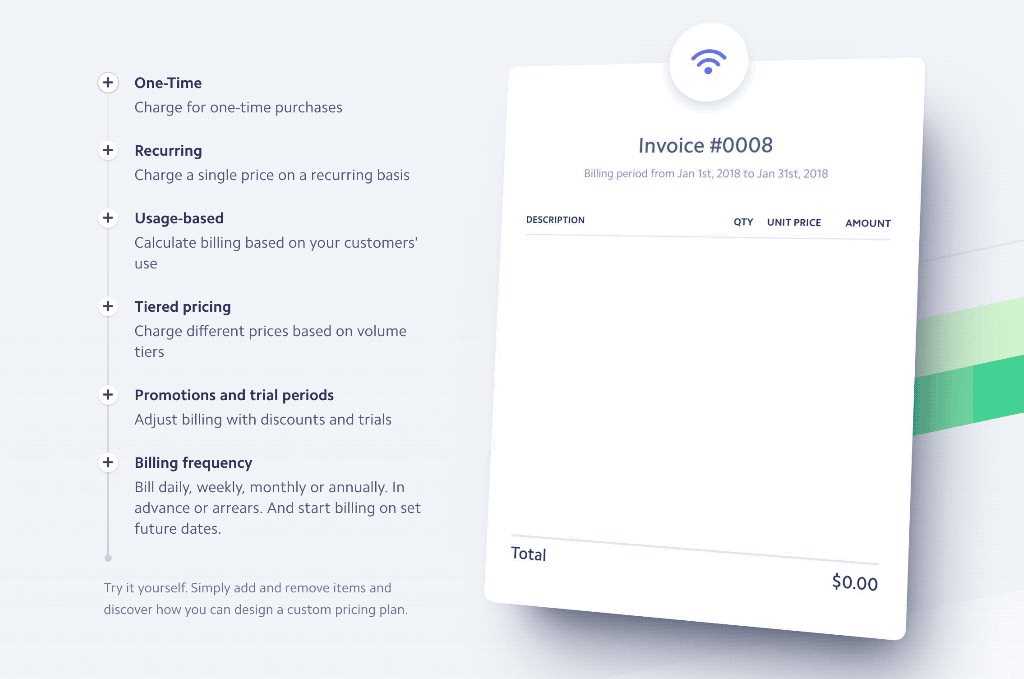Stripe launches a new billing tool to tap demand from online businesses
As more and more spending moves online — whether that’s shopping or subscribing to services like Netflix and Spotify — there’s increasing demand for tools that allow those companies, especially smaller ones, to start getting paid.
Stripe has made its name by providing developers with a simpler way to start charging customers and handling transactions, but today they hope to take another step by launching a billing product for online businesses. That’ll allow them to handle subscription recurring revenue, as well as invoicing, within the Stripe platform and get everything all in the same place. The goal was to replace a previously hand-built setup, whether using analog methods for invoicing or painstakingly putting together a set of subscription tools, and make that experience as seamless as charging for products on Stripe.
“These large enterprise companies have the resources to build internal recurring billing in house,” Tara Seshan, PM on the billing product, said. “Even then they would tell us what challenge it would be. What we did was took a step back and think about, how should this work, how can we make billing tools that are only available to enterprises be available to everyone. That meant something really flexible and really easy to implement. If you’re [running a small operation], you should have the same subscription tools as Spotify. What we have here is a set of building blocks so you get the speed and flexibility you need.”
Indeed, a lot of the Internet has slowly but surely shifted to a subscription model. There’s even a good chance that even the phone you have in your pocket is paid for in an annual subscription to amortize the big ticket price of that product over the course of several months. Larger companies have had these tools in place, but it’s a traditional very startup-y problem to just not have the resources to build them even by cobbling together online payments tools in order to get these running. Startups often have a long list of priorities, and they need to start generating revenue immediately if they want to continue growing.
This launch is, in part, a response to customers demanding a billing product that gets all these invoices and subscription expenses into a single spot. Stripe at its heart is an enterprise company, which means it has to keep close tabs on the needs of its customers while still balancing the needs to continue creating new products that small businesses didn’t realize would actually solve those problems in an elegant way. That’s especially true when it comes to Internet-oriented businesses, which are often changing their business models over time, Seshan said.
“Unlike something like Instagram or Facebook, where you’re doing analytics A/B testing voodoo to figure out what you should build, with Stripe, our businesses know what they want,” Seshan said. “They have clear requests, so we’re much more inclined to listen to our users as opposed to sitting in an ivory tower coming up with a strategy. As they look to add new products, that applies to the startup selling fast and iterating to the large tech companies about to launch a new subscription line or about to add a “for work” side of their product. What we saw often was that billing was the limiting factor to getting a product to market.”

In addition to all this, Stripe looks to apply the machine learning tools it’s created for things like fraud prevention into a new area of expertise. One example of this is figuring out when to intelligently retry a recurring billing charge, which may fail for any number of reasons. Stripe tries to get around problems like lost credit cards or anything along those lines to try to keep the experience as seamless as possible. Seshan said Stripe businesses that implement billing see a 10% increase in revenue — which, for flipping a switch, is pretty substantial.
As companies get bigger and bigger, they will also likely graduate beyond just a simple subscription. An enterprise software company, for example, will probably have to start targeting larger customers that have a salesforce and a different approach for implementing new technology. That means getting invoice-level revenue, which has different implementation requirements than just normal subscription billing. In that case, it’s not like the CIO of a Fortune 100 company can just put a credit card number into a billing service, as those require more robust research and a partnership in place.
While this is a tool that’s a natural fit for something like Stripe, it’s certainly one that’s created a substantial business opportunity. Last month, Zuora — an enterprise subscription services company — filed to go public amid a fresh wave of enterprise IPOs that included Dropbox and Zscaler (and also, to a certain extent, Salesforce’s big acquisition of Mulesoft). Zuora’s subscription services revenue continues to grow, showing that Stripe will certainly have competition here, but also that there’s a large market opportunity.
“We want to think about Stripe as growing the economic infrastructure to increase the GDP of the Internet,” Seshan said. “What we noticed is, we invested in marketplaces in the past, but we’re investing in the next wave of software-as-a-service businesses. We want to power that next trend, and it’s gonna accelerate in the year ahead. We’re really thrilled to power that with billing and subscriptions and we want to make that available to companies with all sizes.”
Powered by WPeMatico